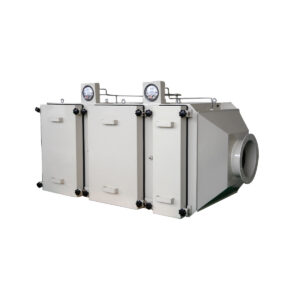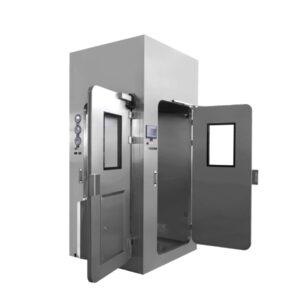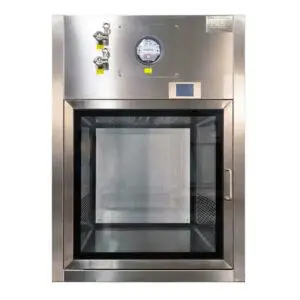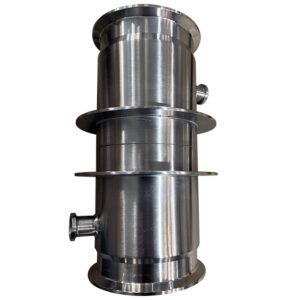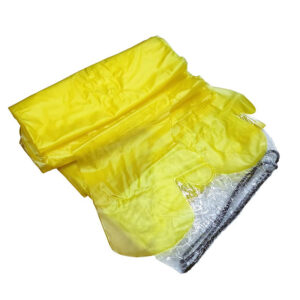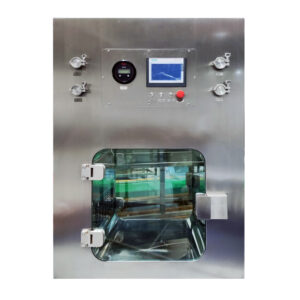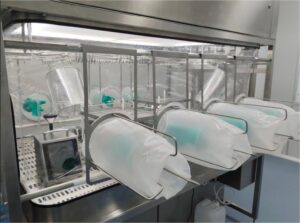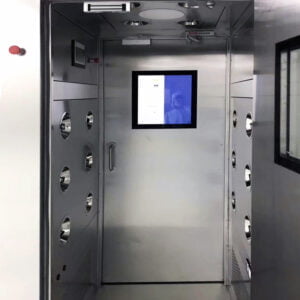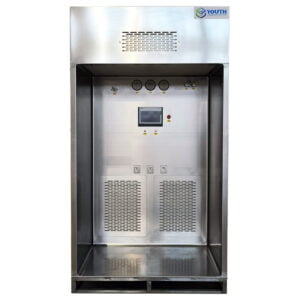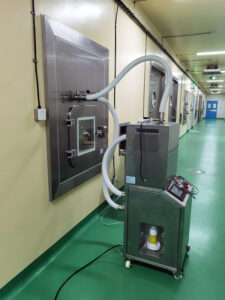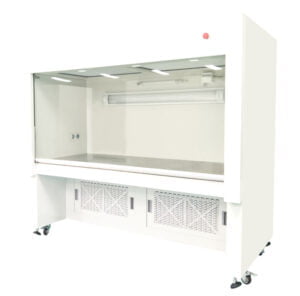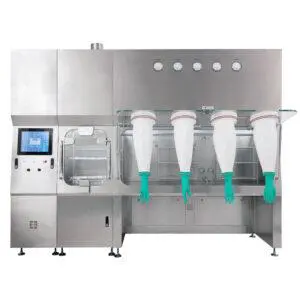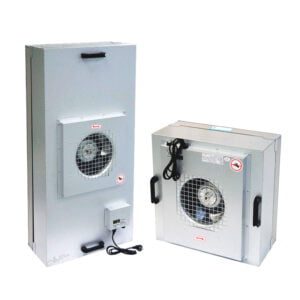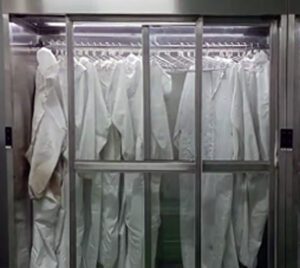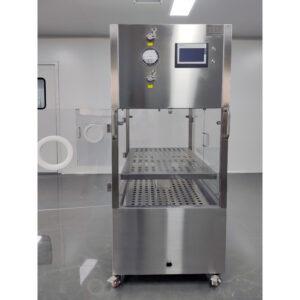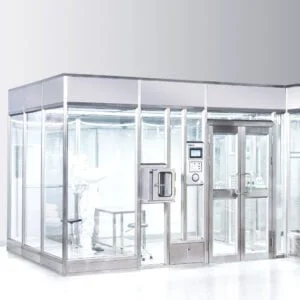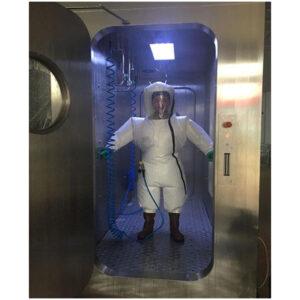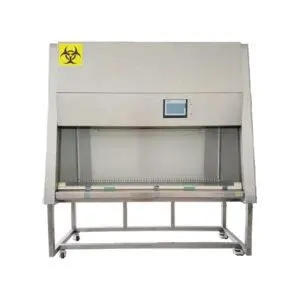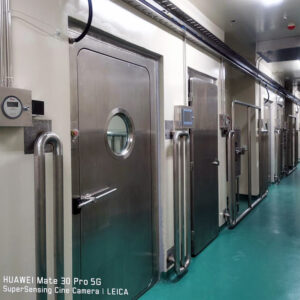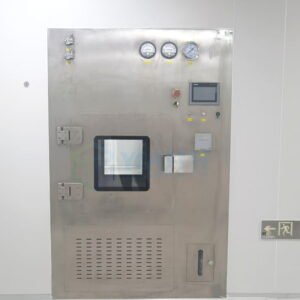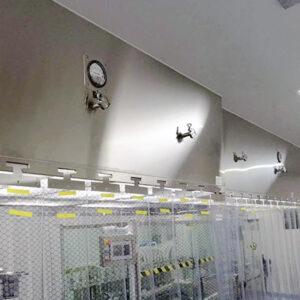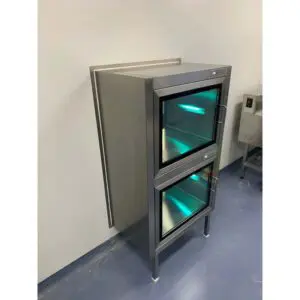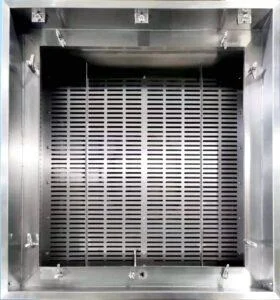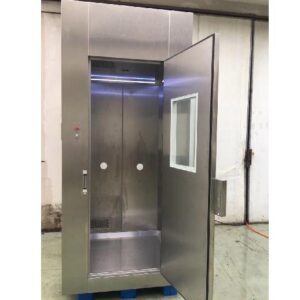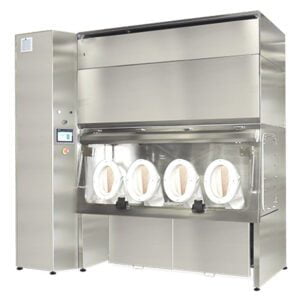HEPA filters are essential components of air purification systems, trapping microscopic particles and ensuring the air we breathe is clean and healthy. However, like any filter, HEPA filters need regular replacement to maintain their effectiveness. This article will guide you through the process of HEPA filter replacement, helping you understand when and how to do it properly.
As air quality becomes an increasingly important concern, knowing how to maintain your air purifier is crucial. HEPA filter replacement is a key aspect of this maintenance, ensuring your air purifier continues to perform at its best. We'll explore the signs that indicate it's time for a replacement, the steps to follow during the replacement process, and tips to maximize the lifespan of your HEPA filter.
Before we dive into the specifics of HEPA filter replacement, it's important to understand that the frequency and method of replacement can vary depending on the brand and model of your air purifier. However, there are general guidelines and best practices that apply to most HEPA filters. By following these, you can ensure that your air purifier continues to provide clean, healthy air for you and your family.
HEPA filters are designed to remove 99.97% of airborne particles as small as 0.3 microns, but their efficiency decreases over time, making regular replacement essential for maintaining optimal air quality.
When Should You Replace Your HEPA Filter?
The timing of HEPA filter replacement is crucial for maintaining the efficiency of your air purifier. While manufacturers often provide general guidelines, several factors can influence how frequently you need to replace your HEPA filter.
Typically, HEPA filters should be replaced every 6 to 12 months, depending on usage and environmental conditions. However, this can vary based on factors such as air quality, the presence of pets, and the frequency of use.
Some air purifiers come with indicator lights that signal when it's time for a filter change. These indicators can be based on run time or actual filter condition, depending on the model. However, it's important to be aware of other signs that might indicate the need for a replacement.
According to air purifier manufacturers, HEPA filters in heavily polluted environments may need replacement as frequently as every 3 months, while those in cleaner environments might last up to 2 years.
Here's a table summarizing the typical replacement intervals for HEPA filters based on environmental conditions:
| Environment | Replacement Interval |
|---|---|
| High pollution | 3-6 months |
| Average home | 6-12 months |
| Clean environment | 12-24 months |
In conclusion, while general guidelines are helpful, it's important to monitor your air purifier's performance and be aware of signs indicating the need for a filter replacement. Regular checks and timely replacements will ensure your air purifier continues to provide clean, healthy air.
What Are the Signs That Your HEPA Filter Needs Replacement?
Recognizing the signs that your HEPA filter needs replacement is crucial for maintaining optimal air quality in your home or office. While some air purifiers have built-in indicators, it's important to be aware of other telltale signs that your filter may be due for a change.
One of the most obvious signs is a decrease in air purifier performance. If you notice that your air doesn't seem as clean as it used to be, or if there's an increase in dust or allergens in your environment, it might be time for a new filter. Additionally, if you hear your air purifier running louder than usual, this could indicate that the filter is clogged and struggling to process air efficiently.
Visual inspection can also provide valuable clues. If your HEPA filter appears dirty, discolored, or clogged with debris, it's likely time for a replacement. Some filters may even develop an unpleasant odor when they're past their prime.
Studies have shown that a clogged HEPA filter can reduce an air purifier's efficiency by up to 50%, significantly impacting indoor air quality.
Here's a table summarizing the key signs that your HEPA filter needs replacement:
| Sign | Description |
|---|---|
| Decreased performance | Air doesn't seem as clean as before |
| Increased noise | Air purifier runs louder than usual |
| Visual cues | Filter appears dirty or discolored |
| Odor | Unpleasant smell from the air purifier |
| Increased allergies | More frequent allergy symptoms |
In conclusion, being attentive to these signs can help you maintain the efficiency of your air purifier and ensure you're breathing the cleanest air possible. Regular checks and timely replacements are key to optimal air purifier performance.
How Do You Choose the Right Replacement HEPA Filter?
Selecting the correct replacement HEPA filter is crucial for maintaining your air purifier's efficiency and ensuring it continues to provide clean, healthy air. The process of choosing the right filter involves several considerations, including compatibility, quality, and specific needs.
First and foremost, you need to ensure that the replacement filter is compatible with your air purifier model. Most manufacturers provide specific replacement filters for their devices, and using these is often the safest bet. However, there are also third-party options available, which may offer cost savings or additional features.
When selecting a replacement filter, consider factors such as the filter's MERV (Minimum Efficiency Reporting Value) rating, which indicates its efficiency in trapping particles of different sizes. Higher MERV ratings generally indicate better filtration, but they may also restrict airflow more, potentially affecting your air purifier's performance.
Research shows that using the wrong replacement filter can reduce an air purifier's efficiency by up to 60% and potentially damage the device.
Here's a table comparing different MERV ratings and their filtration capabilities:
| MERV Rating | Particle Size Filtered | Typical Applications |
|---|---|---|
| 1-4 | > 10 microns | Residential window AC units |
| 5-8 | 3-10 microns | Better residential, commercial, and industrial |
| 9-12 | 1-3 microns | Superior residential, better commercial and industrial |
| 13-16 | 0.3-1 microns | Hospital and general surgery |
| 17-20 | < 0.3 microns | Clean rooms, radioactive materials |
In conclusion, choosing the right replacement HEPA filter involves balancing compatibility, quality, and specific needs. By considering these factors and understanding the MERV rating system, you can ensure that your air purifier continues to perform optimally. Remember, YOUTH offers a range of high-quality HEPA filters suitable for various air purifier models.
What Tools Do You Need for HEPA Filter Replacement?
Replacing a HEPA filter is generally a straightforward process that doesn't require specialized tools. However, having the right equipment on hand can make the task easier and ensure you complete it safely and efficiently.
The most important "tool" for HEPA filter replacement is actually a pair of clean hands. However, to protect yourself from dust and allergens that may have accumulated on the old filter, it's recommended to wear disposable gloves. A dust mask can also be helpful, especially if you have allergies or respiratory sensitivities.
In some cases, you might need a screwdriver to open the air purifier's housing. The type of screwdriver required (flathead or Phillips) will depend on your specific air purifier model. It's a good idea to consult your air purifier's manual to see if any tools are needed for filter replacement.
According to air purifier manufacturers, using proper tools and protective gear during HEPA filter replacement can reduce exposure to accumulated pollutants by up to 90%.
Here's a table summarizing the common tools and items you might need for HEPA filter replacement:
| Item | Purpose |
|---|---|
| Disposable gloves | Protect hands from dust and allergens |
| Dust mask | Prevent inhalation of particles |
| Screwdriver | Open air purifier housing (if necessary) |
| Cleaning cloth | Wipe down interior of air purifier |
| Garbage bag | Dispose of old filter |
In conclusion, while HEPA filter replacement doesn't typically require specialized tools, having these basic items on hand can make the process safer and more efficient. Remember to always refer to your air purifier's manual for specific instructions and tool requirements.
What Are the Steps to Replace a HEPA Filter?
Replacing a HEPA filter is a crucial maintenance task that helps ensure your air purifier continues to function effectively. While the exact process may vary slightly depending on your air purifier model, there are general steps that apply to most HEPA filter replacements.
Begin by turning off and unplugging your air purifier. This is an important safety step that should never be skipped. Next, locate the filter compartment. This is usually easily accessible, often behind a removable panel on the front or back of the unit.
Once you've opened the filter compartment, carefully remove the old filter. It's a good idea to have a garbage bag ready for immediate disposal of the old filter to prevent the release of trapped particles. Before inserting the new filter, take a moment to clean the inside of the air purifier with a soft, dry cloth.
Studies have shown that properly replacing HEPA filters can improve an air purifier's efficiency by up to 99%, significantly enhancing indoor air quality.
Here's a table outlining the general steps for HEPA filter replacement:
| Step | Description |
|---|---|
| 1 | Turn off and unplug the air purifier |
| 2 | Locate and open the filter compartment |
| 3 | Remove the old filter |
| 4 | Clean the interior of the air purifier |
| 5 | Insert the new filter |
| 6 | Close the filter compartment |
| 7 | Reset the filter indicator (if applicable) |
In conclusion, replacing a HEPA filter is a straightforward process that can significantly improve your air purifier's performance. By following these steps and referring to your air purifier's manual for specific instructions, you can ensure that your HEPA filter replacement is done correctly and safely.
How Can You Extend the Life of Your HEPA Filter?
While regular replacement is necessary, there are several steps you can take to extend the life of your HEPA filter, ensuring it remains effective for as long as possible. Proper maintenance not only prolongs the filter's lifespan but also maintains the air purifier's efficiency.
One of the most effective ways to extend your HEPA filter's life is to use a pre-filter. Pre-filters capture larger particles before they reach the HEPA filter, reducing the load on the main filter. Regular cleaning or replacement of the pre-filter can significantly extend the life of your HEPA filter.
Another important factor is the placement of your air purifier. Avoid placing it in areas with high dust or moisture levels. Also, running your air purifier at lower speeds when air quality is good can help reduce wear on the filter.
Air purifier manufacturers report that proper maintenance and usage can extend a HEPA filter's lifespan by up to 50%, resulting in significant cost savings over time.
Here's a table summarizing tips to extend your HEPA filter's life:
| Tip | Description |
|---|---|
| Use a pre-filter | Captures larger particles, reducing load on HEPA filter |
| Clean pre-filter regularly | Maintains efficiency of pre-filter |
| Proper placement | Avoid high dust or moisture areas |
| Adjust speed settings | Use lower speeds when air quality is good |
| Regular vacuuming | Reduces airborne particles in your home |
| Replace on schedule | Don't wait for visible signs of wear |
In conclusion, while HEPA filters will eventually need replacement, these steps can help you maximize their lifespan. By following these tips, you can ensure your air purifier continues to provide clean, healthy air while also saving on replacement costs.
What Are the Environmental Considerations for HEPA Filter Disposal?
As we become more environmentally conscious, it's important to consider the impact of disposing of used HEPA filters. While these filters play a crucial role in improving indoor air quality, their disposal can pose environmental challenges if not handled properly.
HEPA filters are typically made from materials like fiberglass or polypropylene, which are not biodegradable. Additionally, used filters contain trapped pollutants, which could be harmful if released into the environment. Therefore, it's crucial to dispose of them responsibly.
Most HEPA filters should be disposed of in regular trash, as they are not recyclable due to the contaminants they contain. However, some manufacturers are developing more eco-friendly filters or recycling programs for used filters. It's worth checking if your filter manufacturer offers such options.
Environmental agencies estimate that proper disposal of HEPA filters can prevent the release of up to 99% of trapped pollutants back into the environment.
Here's a table summarizing environmental considerations for HEPA filter disposal:
| Consideration | Description |
|---|---|
| Material | Not biodegradable (typically fiberglass or polypropylene) |
| Contaminants | Contains trapped pollutants |
| Disposal method | Usually regular trash (not recyclable) |
| Eco-friendly options | Some manufacturers offer recycling programs |
| Packaging | Recycle packaging materials when possible |
In conclusion, while HEPA filters are essential for maintaining good indoor air quality, it's important to consider their environmental impact. By disposing of them properly and exploring eco-friendly options when available, we can minimize their environmental footprint while still benefiting from their air-purifying capabilities.
Conclusion
HEPA filter replacement is a crucial aspect of maintaining optimal air quality in your home or office. By understanding when and how to replace your HEPA filter, you can ensure that your air purifier continues to function at its best, providing you with clean, healthy air.
Remember, the frequency of replacement depends on factors such as usage, environmental conditions, and the specific model of your air purifier. Pay attention to signs that indicate your filter needs replacement, such as decreased performance, increased noise, or visible dirt on the filter.
Choosing the right replacement filter is essential for maintaining your air purifier's efficiency. Always opt for filters that are compatible with your device and consider factors like MERV ratings when making your selection.
The process of replacing a HEPA filter is generally straightforward, but it's important to follow the steps carefully and use appropriate protective gear. By doing so, you can ensure a safe and effective filter replacement.
Extending the life of your HEPA filter through proper maintenance and usage can help reduce costs and environmental impact. Simple steps like using a pre-filter and placing your air purifier in an optimal location can make a significant difference.
Lastly, consider the environmental impact when disposing of used HEPA filters. While most filters end up in regular trash, look for eco-friendly disposal options when available.
By following these guidelines, you can maintain excellent air quality in your space while also being mindful of cost and environmental considerations. Remember, clean air is essential for our health and well-being, and proper HEPA filter maintenance is key to achieving this goal.
External Resources
Ultimate Guide to HEPA Filter Replacement: Keep Your Air Clean … – This guide covers everything you need to know about HEPA filter replacement, including when to replace, how to do it, and signs indicating the need for a replacement.
Air Purifier Filters – Honeywell Store – Provides guidelines on when to replace different types of Honeywell air purifier filters, including HEPA, Enhanced, and Pre-Filters, and how to identify the correct replacement filters.
True HEPA Air Purifier Replacement Filter (1 Pack) – Safety 1st – Details the replacement process for Safety 1st True HEPA air purifier filters, including usage-based replacement timing and the benefits of using True HEPA filters.
Filter Replacement Instructions – Step-by-step instructions on how to replace True HEPA and carbon filters in air purifiers, including safety precautions and visual guides.
Single Replacement Filters – Alen air purifier – Offers various replacement filter options for Alen air purifiers, including HEPA-Fresh and HEPA-Pure filters, with pricing and compatibility information.
How Often Should You Replace Your HEPA Filter? – Although not directly linked here, this resource from the EPA provides general guidelines on the replacement of HEPA filters based on usage and environmental conditions.
- HEPA Filter Replacement: A Comprehensive Guide – A detailed guide that explains the importance of HEPA filter replacement, how to replace them, and factors affecting filter lifespan.
Related Contents:
- HEPA Filter Maintenance: Extending Filter Life
- HEPA Filter Efficiency: Maximizing Air Purification
- HEPA vs ULPA Filters: Choosing the Right Option
- Mobile LAF Cart HEPA Filter Replacement: 2025 Guide
- HEPA Filters in Biosafety Cabinets: A Deep Dive
- HEPA Filter Testing: Ensuring Optimal Performance
- HEPA Filter Replacement in Sterility Test Isolators
- HEPA Filter Construction: Materials and Design
- BIBO Filter Replacement: Step-by-Step Guide


